Art Fairs
Two Fairs Battle for Primacy in Brussels, Europe’s Rising Art Capital
For its second edition in the Belgian capital, Independent has upped its game. What does it mean for Art Brussels?
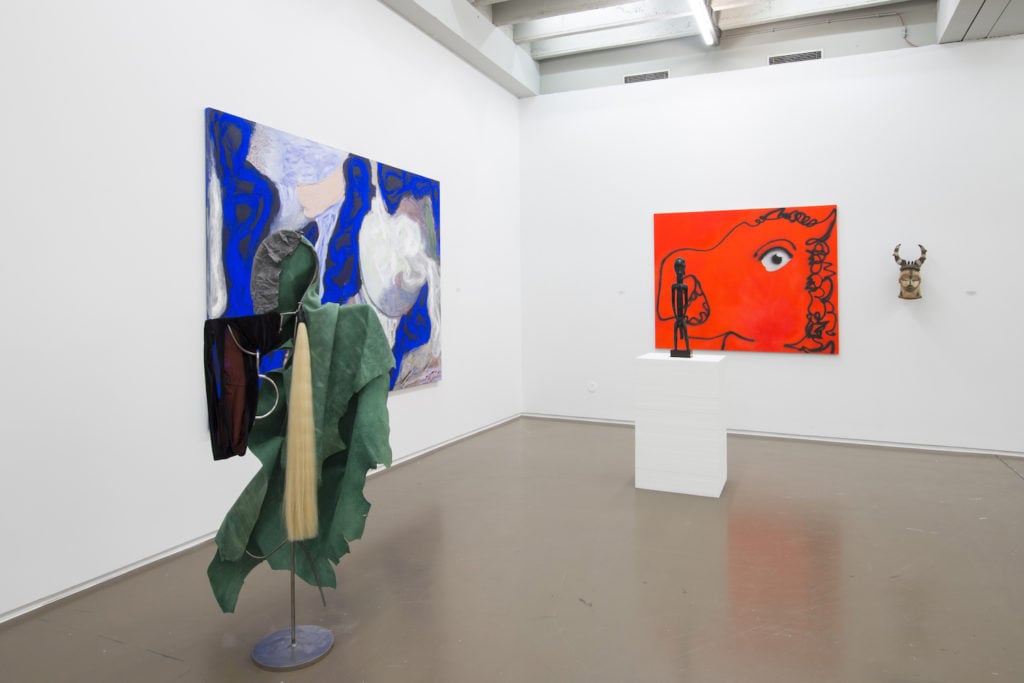
For its second edition in the Belgian capital, Independent has upped its game. What does it mean for Art Brussels?

Lorena Muñoz-Alonso

Walking around Brussels this week, two different banners can been seen blowing from street lamps all over the city: those advertising the second edition of newcomer fair Independent, and those promoting the 35th edition of Art Brussels, the city’s long-running and, until now at least, premier art fair.
Although having two simultaneous fairs in big art cities like New York, London, or Basel is a given, the arrival of Independent to Brussels last year did ruffle feathers across the local scene, sparking rumors of a battle for both exhibitors and relevance between the two fairs. But, is there any substance to these whispers?
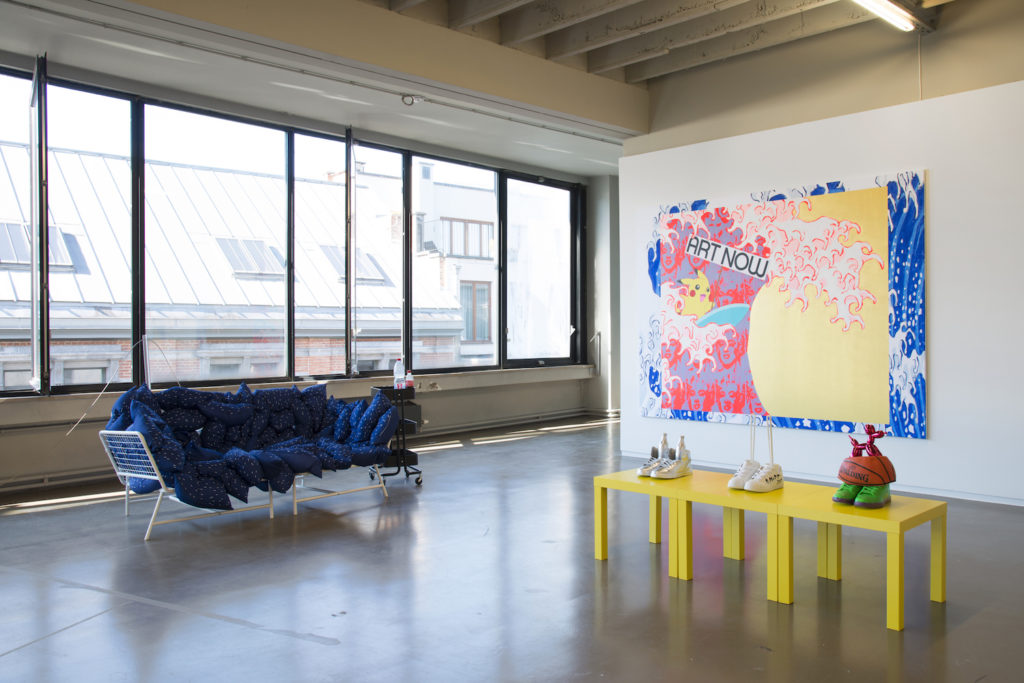
Booth of Tatjana Pieters at Independent Brussels 2017. Photo ©Isabelle Arthuis, courtesy Independent Brussels.
“Unfortunately, they are true,” Brussels-based collector Alain Servais, a key fixture in the scene, tells artnet News. “It’s incredibly childish, and it evidences a lack of foresight. They are different fairs, and of course there might be a few overlaps, but they shouldn’t compete but work together. The fact that some big galleries that might never go to Art Brussels participate in Independent is positive for everyone. Making Brussels a bigger and better destination is advantageous for everyone here.”
The battle has manifested itself as a reported lack of communication between the two fairs, as well as some clashes in scheduling. For example, some events of Art Brussels’ collectors program conflicted with the VIP preview of Independent on Wednesday.
Yet, on said preview, collectors and VIPs could be seen in throngs, much more so than in the previous year.
Independent Brussels, indeed, oozes a very particular energy, being one of the few art fairs that can seamlessly juxtapose heavyweights like Maureen Paley, Gladstone Gallery, and Mendes Wood DM with consistently exciting young galleries like London’s Carlos/Ishikawa, Zurich’s Gregor Staiger, and Geneva’s Truth and Consequences, creating a blend of the established and the emerging that feels both solid and refreshing.
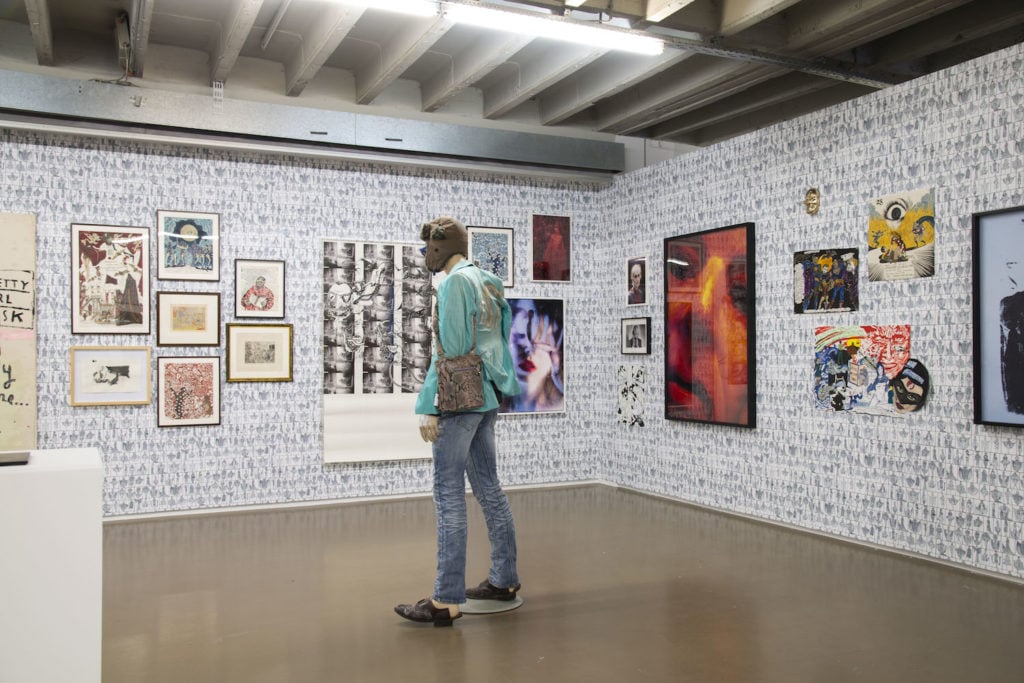
Booth of David Zwirner at Independent Brussels 2017. Courtesy the fair.
Some of the most outstanding presentations this year include that of returning exhibitor David Zwirner, which delivers a crowded booth curated by Marcel Dzama focused on the motif of the mask, featuring a huge number of artists including Cindy Sherman, Jordan Wolfson, Wolfgang Tillmans, Sherrie Levine, and Kerry James Marshall.
Two floors above, Sprüth Magers (which also participated in the New York edition of Independent in March) is making its Brussels debut with a theatrical installation by Thea Djordjadze, and two wall-based works by David Maljkovic.
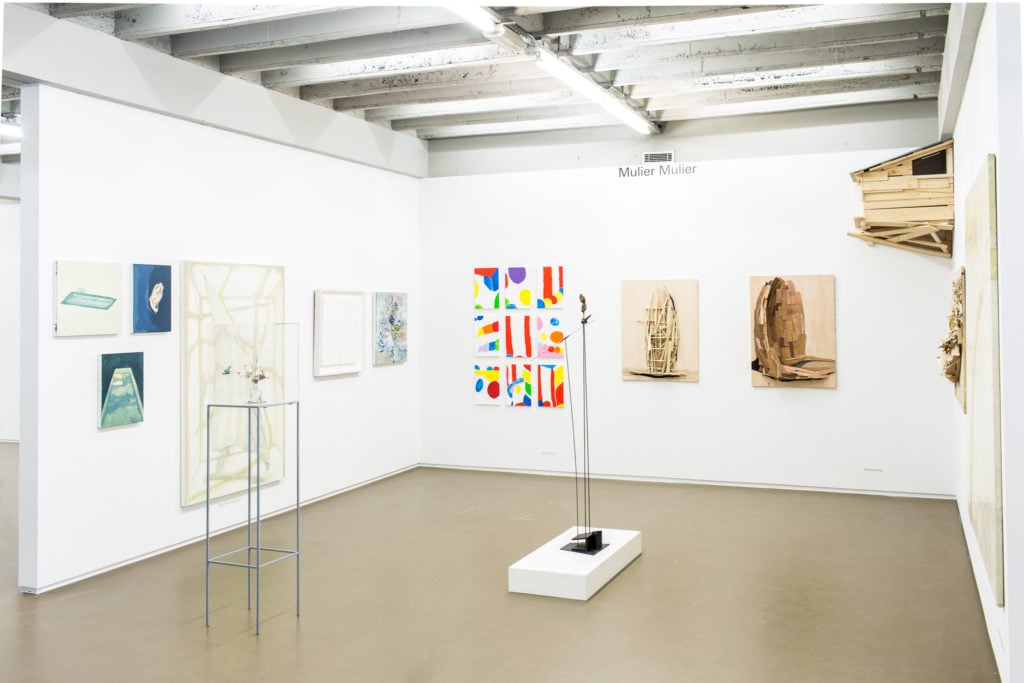
View of the Mulier Mulier booth at Independent Brussels 2017. Photo courtesy the gallery.
Belgian dealers Mulier Mulier are also returning to Independent this year, with a booth showcasing works by artists including Jannis Kounellis, Jack Early, Tadashi Kawamata, Art & Language, and Takis, priced between €5,000 and €120,000. They made the move to the young fair following a 10-year stint at Art Brussels. Why the change?
“To have more freedom, for one. At Art Brussels you could only show a specific number of artists, whereas here you have freedom, you can show as many as you want. Also, Independent invites you. At Art Brussels, even after having participated 10 times, you still have to submit a proposal, it has to be vetted by the committee, and so on… Last year, we participated at the inaugural edition of Independent and we sold really well, we were really pleased,” Erik Mulier tells artnet News.
“Even if many American collectors canceled their attendance because of the terrorist attacks,” Luc Mulier adds, standing quietly next to his brother.
Mulier is referring to the two bombings at the city’s airport and one at Maalbeek metro station that took place on March 22—a month before the 2016 editions of both fairs—leaving 35 dead and more than 300 injured.
Indeed, neither fair let tragedy stop business from continuing as usual.
“One could say that last year Art Brussels ‘won,’ because it had double the attendance and sales were better, but I think that was mainly because Independent was new in town and perhaps didn’t communicate properly,” Servais says.
“But this year Independent has raised its game and engaged more with local galleries and collectors. The key question is, will it succeed in drawing in the traditional local collectors? Not the famous ones that everyone knows internationally, but the ones that make regional fairs thrive,” he wonders.
As far as sales went on the first day, the answer might be yes. Before the end of the preview, dealers reported a string of purchases. Travesía Cuatro, for example, had sold a drawing by Jorge Méndez Blake to a Spanish-American collector for $80,000; Antwerp’s Tim Van Laere Gallery had sold Kati Heck’s striking sculpture Schutzengel (2015) for €48,000, a painting by Rinus Van de Velde for €42,000, and another painting by Ben Sledsens for €15,000. Berlin’s Peres Projects sold all three works for sale in its booth by Donna Huanca and Austin Lee, for prices ranging between $20,000 and $25,000.
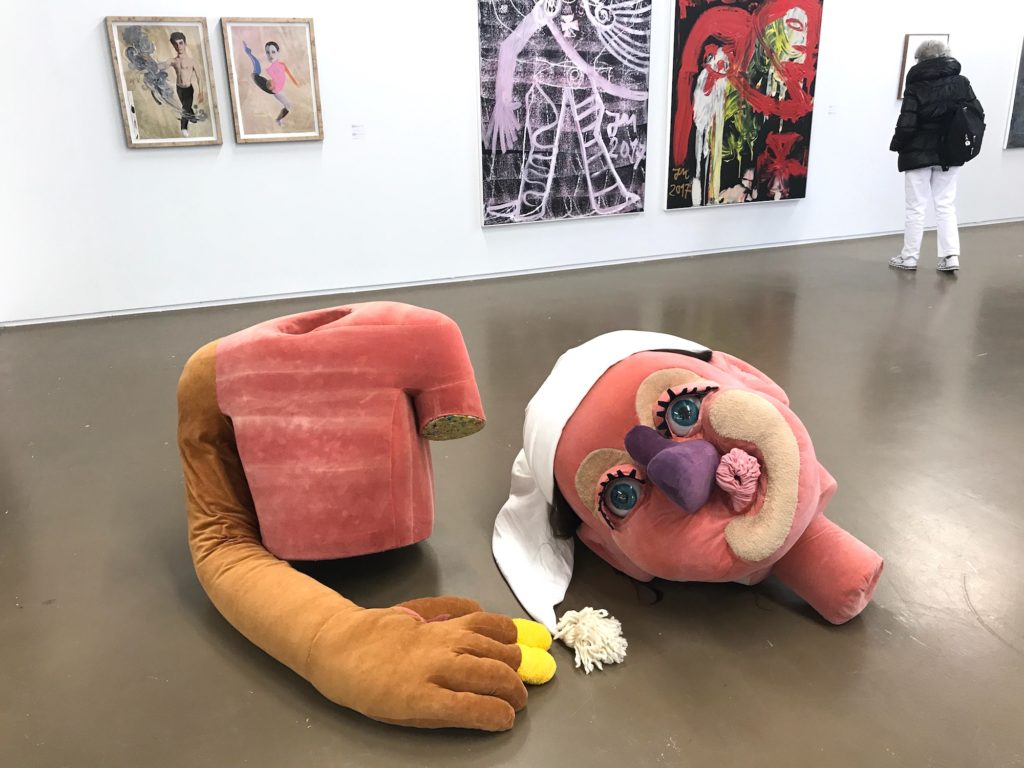
Kati Heck’s Schutzengel (2015) at Tim Van Laere Gallery booth at Independent Brussels 2017. Photo Lorena Muñoz-Alonso.
Meanwhile, CLEARING—which just this week launched its massive new premises in the city, near WIELS art center—reportedly sold several works, including a Man Ray for €12,000. New York dealer and Independent co-founder Elizabeth Dee sold a 2017 piece by Leo Gabin for €20,000 to a Belgian collector, and Glasgow’s Mary Mary sold a painting by Emily Mae Smith, called Tempest (2017), for $22,000 to a US collector. By the second day, Mulier Mulier had sold a 1965 sculpture by Vlassis Caniaris for €14,000 to a European collector, and a 2015 wooden maquette by Kawamata for €7,500.
On Thursday morning, collectors and journalists decamped to the Tour & Taxis complex for the VIP preview of Art Brussels, where 144 galleries from 28 countries are exhibiting until Sunday.
Key newcomers this year include the China- and Singapore-based Pearl Lam Galleries and Mexico’s Proyectos Monclova. The fair has also managed to retain a strong contingent of loyal Belgian galleries—like dépendance, Xavier Hufkens, Almine Rech, Nathalie Obadia, Axel Vervoordt, and Meessen de Clercq—signaling the solid grip of the fair on the local scene.
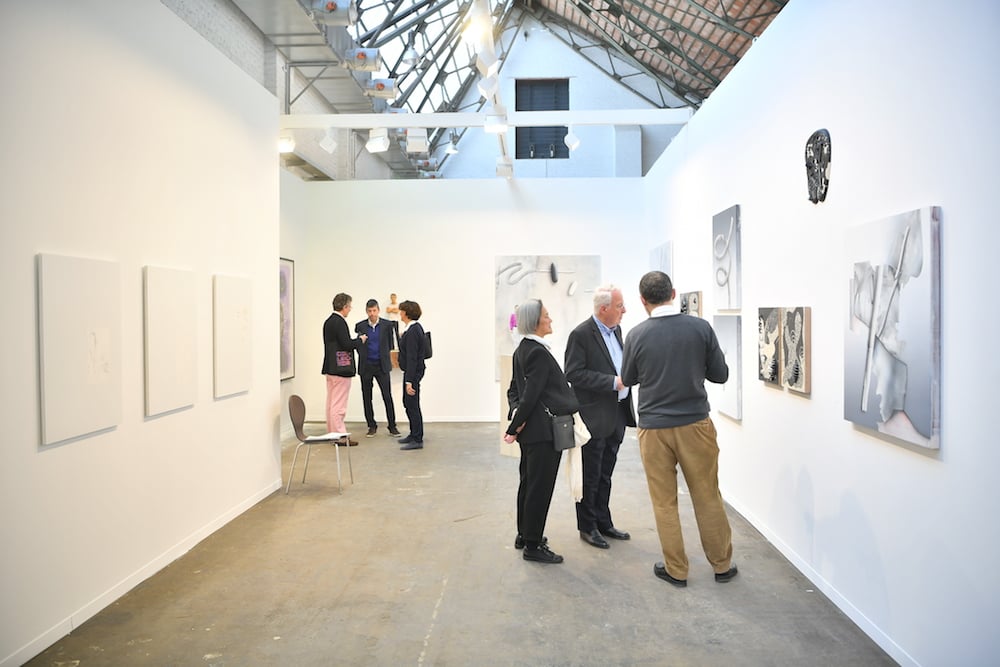
Art Brussels 2017, Tour & Taxis. Photo David Plas.
While Art Brussels—much more traditional in its layout and design, as well as in the art contained in it—might suffer from a comparison with Independent for those partial to the cool and hip factor, it still has put together a strong edition, in which solo presentations particularly stand out.
At the Solo section, Laure Prouvost at Nathalie Obadia, Rose Wiley at Choi&Lager, and the mind-blowing “Nana” presentation by Niki de Saint-Phalle at Galerie Mitterrand offset nicely the conceptual stance of Benoît Maire at Meessen de Clercq, whose presentation won the Solo Prize this year. And the Rediscovery section—focused on under-recognized artists who worked between 1917 and 1987—shines a light on overlooked painters, like the Georgian artist Natela Iankoshvili (1918-2007) at Berlin’s Galerie Kornfeld, and Jean Messagier at Ceysson & Bénétière.
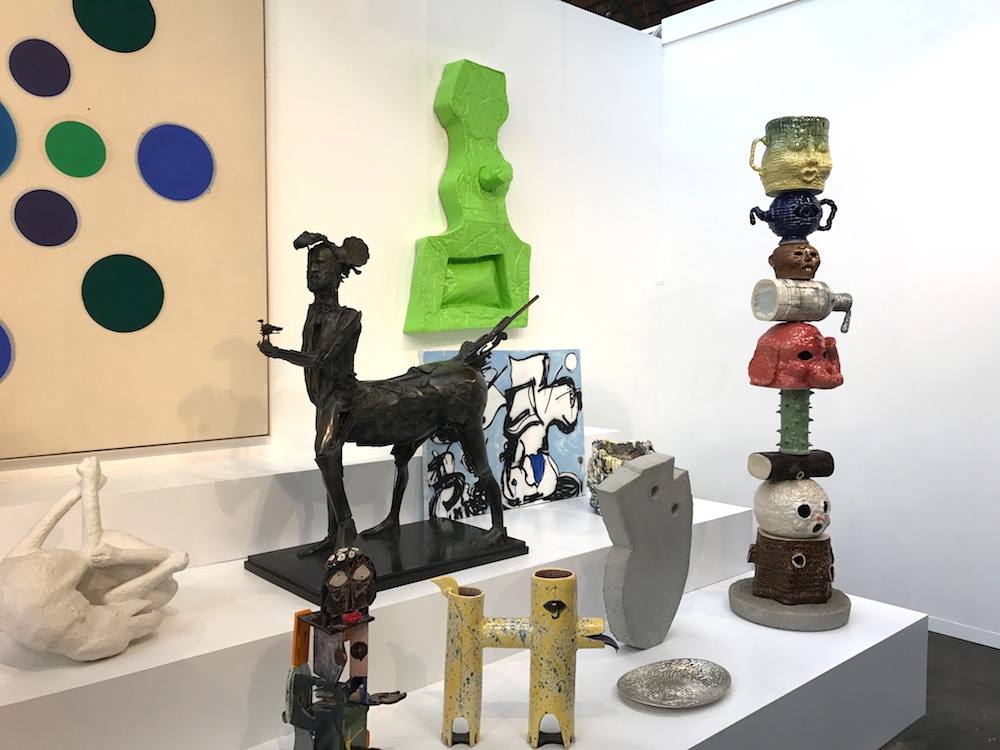
View of the Sorry We’re Closed booth at Art Brussels 2017. Photo Lorena Muñoz-Alonso.
Reflecting the strong presentations, sales moved at a dynamic pace during the first hours of preview day.
Salisbury’s New Art Centre, for example, sold two works by Edmund de Waal, two sculptures by Phyllida Barlow, and a cast iron sculpture by Anthony Caro. They went for prices between €50,000 and €150,000, to a combination of new Belgian clients and UK-based collectors with whom the gallery already had relationships. Rodolphe Janssen sold a large-scale oil on linen painting by Sean Landers for $95,000 to a major European collector, and five Léon Wuidar works. Brussels’ Sorry We’re Closed sold almost its entire eye-catching booth in the early hours of the preview.
At the same time, Meessen de Clercq sold a José María Sicilia work at a price around €35,000, as well as a work by Franco-Vietnamese artist Thu Van Tran for something like €24,000. Axel Vervoordt Gallery sold a work by Gutai artist Ryuji Tanaka at its Rediscovery booth for a price in the neighborhood of €60,000, a 2016 Michel Mouffe piece, and a work by young Belgian artist Renato Nicolodi, for prices in the range of €20,000 and €25,000.

Art Brussels 2017, featuring a painting by Guy Yanai. Photo David Plas.
Back to the subject of competing fairs, Art Brussels’ director Anne Vierstraete spoke to artnet News with her usual candidness: “Well, of course Independent is competition. It’s like between galleries, of course you can be friends with your neighbor, but at the end of the day you need to sell.”
“This year is a year of observation and assessment for us,” Vierstraete continues. “Last year was a very a specific context, with the attacks, our change of venue, the launch of Independent, so we couldn’t really assess whether having other fairs in town is positive for us, whether they bring curators and collectors who then go and visit us too. We certainly make a huge investment in bringing these professionals and collectors to Brussels, who then go to see these other fairs, so they do benefit from us.”
A veteran Art Brussels exhibitor tells artnet News: “While competition is often a good thing when it comes to fostering business, Independent has been extremely divisive for the Belgian art world: you now have effectively two factions. And although Brussels is a great hub for continental collectors, it’s unclear if it can actually sustain two fairs of similar scope and ambition in the long run.”
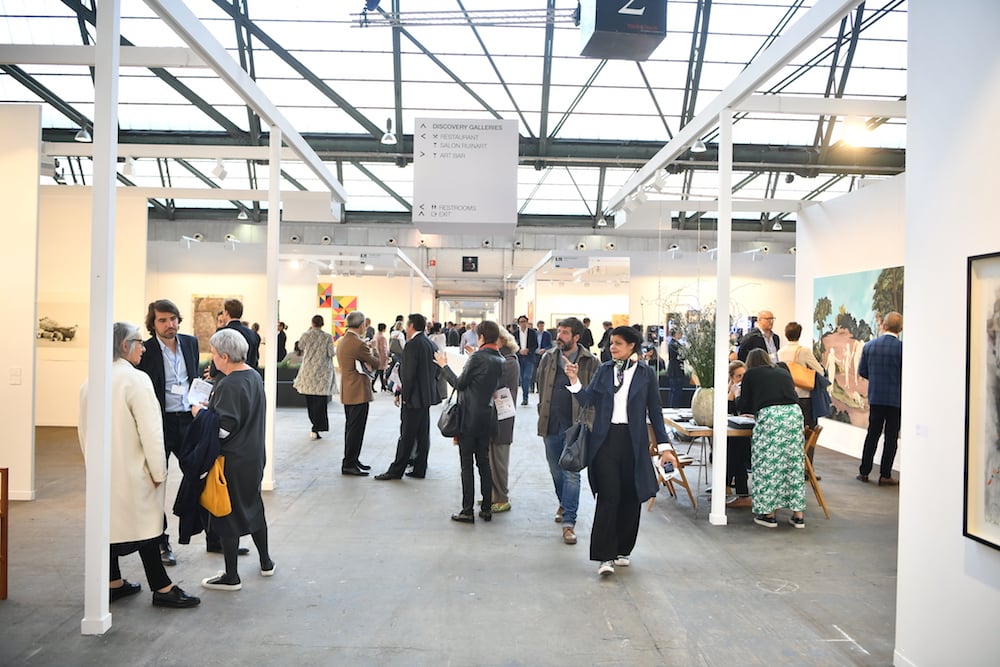
Art Brussels 2017, Tour & Taxis. Photo David Plas.
The recent boom in art fairs has its consequences, and not just in Brussels.
“The proliferation of art fairs means that collectors don’t need, or don’t want, to travel so much anymore,” says Servais. “Long haul flights and jet lag are hard work and the fact that, for example, you have editions of Art Basel, Frieze, or Independent on several continents, means you don’t need to travel so much anymore. It’s galleries now that have to do all the traveling, be it to participate in fairs or opening outposts.”
In recent years, several galleries have, in fact, expanded to Brussels, following the steps of blue-chip galleries Almine Rech and Gladstone, which opened spaces in the city in 2007 and 2008, respectively.
The latest to join to the Brussels club is Brazil’s powerhouse Mendes Wood DM, which launched its space on Tuesday, in a stunning Art Deco building on the Rue des Sablons, with an inaugural show featuring more than 40 artists including Joëlle Tuerlinckx, Rosemarie Trockel, Michael Dean, Franz West, and Christina Mackie.
“Brussels is a strategic point because it is incredibly well connected and much cheaper than other European capitals. You can run a gallery here for a fourth of the price of what it would you cost you in London, or a third of the price of Paris, so it makes total sense for a gallery like Mendes Wood to open here,” Servais says.
“What we need is that local galleries and art fairs, with the help of the local authorities, harness the city’s huge potential and bring collectors from neighboring areas, like Germany, France, the Netherlands, and the UK. But to succeed, we all have to work together,” he warns.